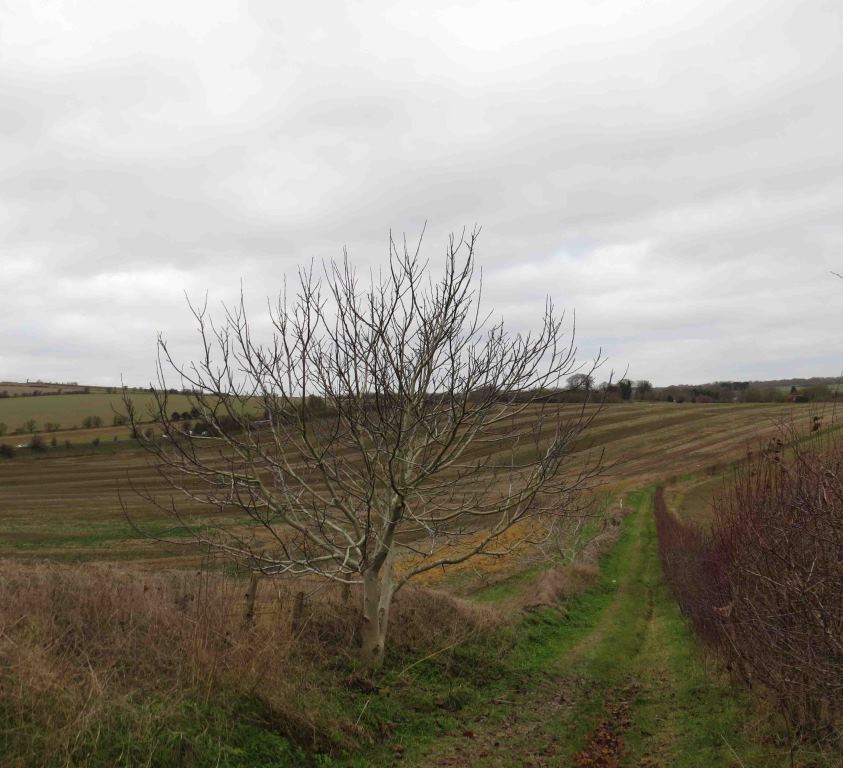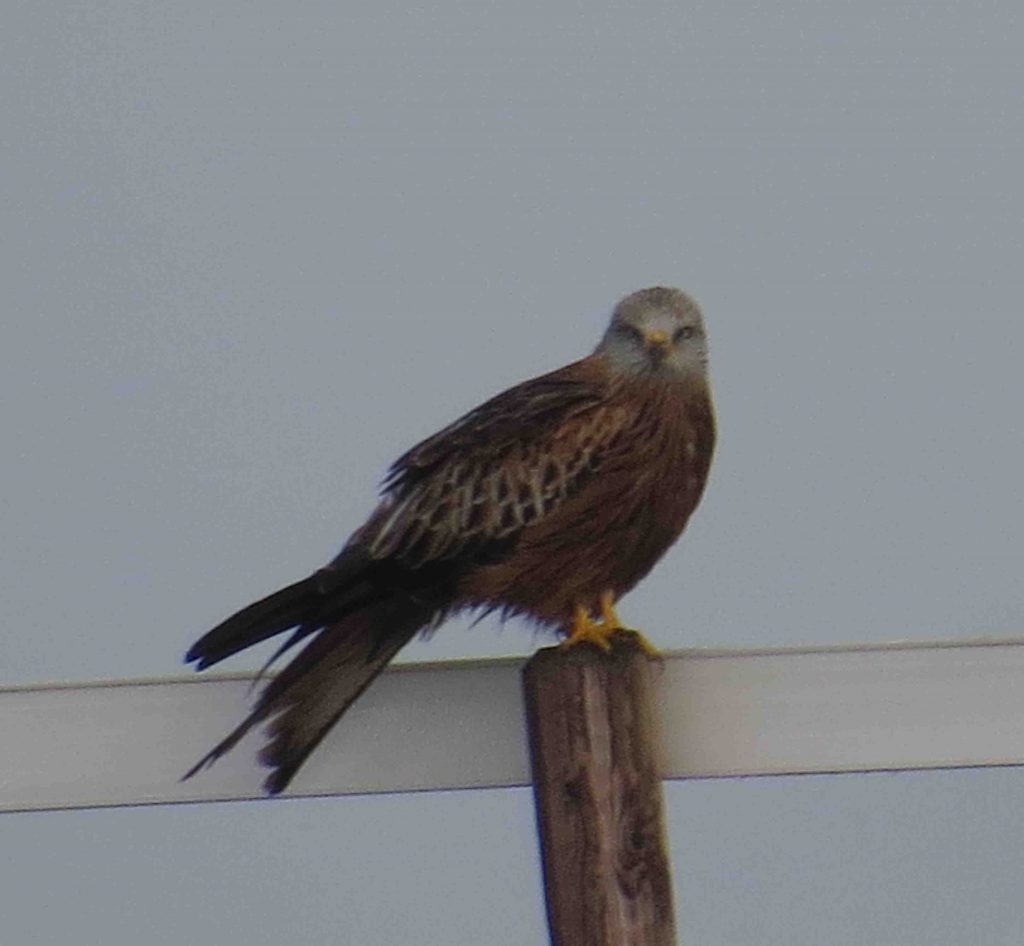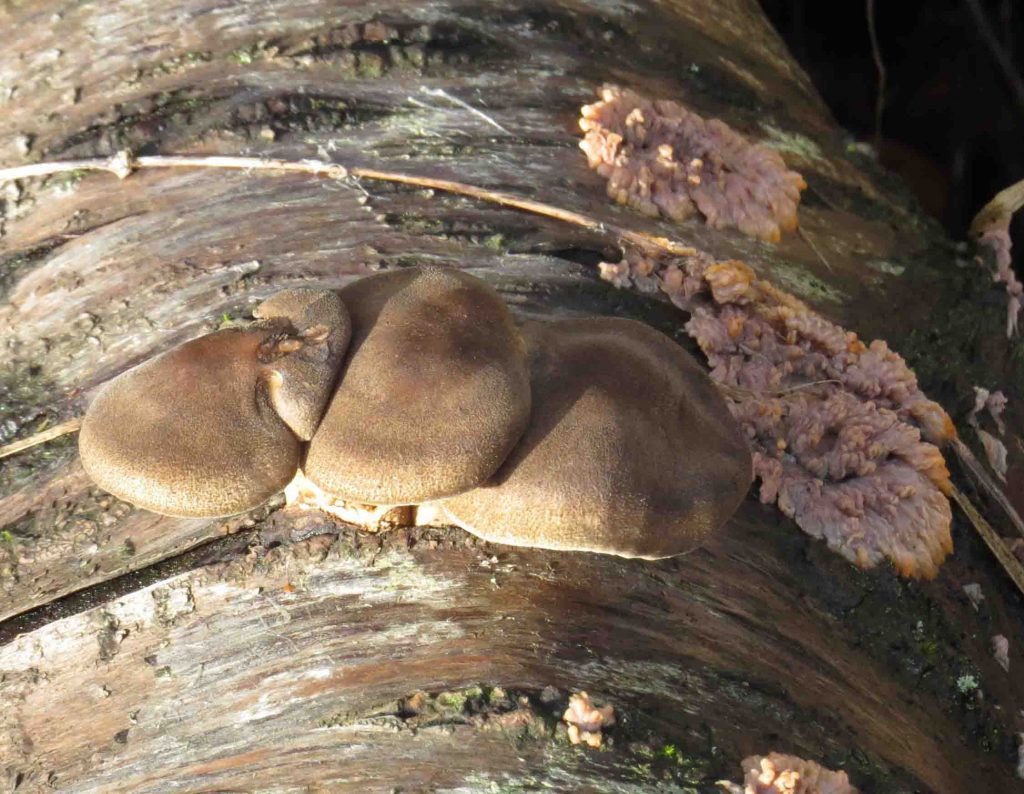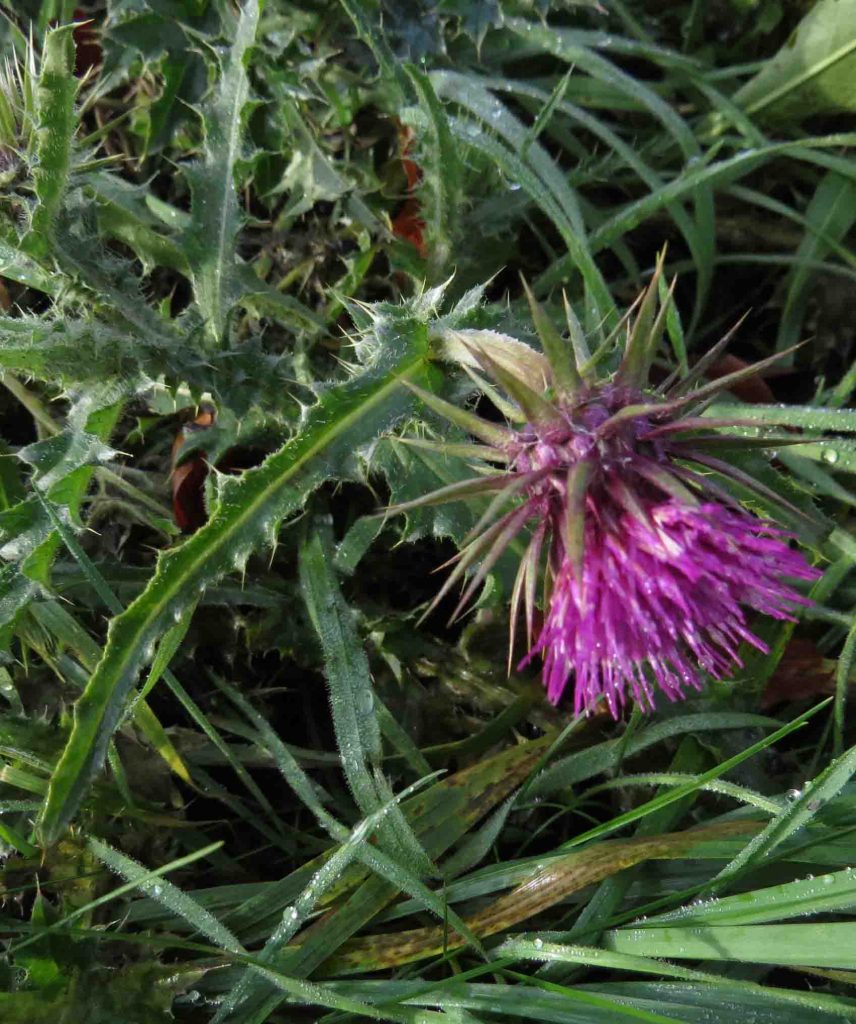Fiona Brown led a walk at East Ilsley on Wednesday 18 December. The village used to hold the biggest sheep fairs outside London and the walk partly followed a route used by the drovers. It was a lovely, mild winter’s day, fairly breezy but remaining dry until just after the walk was completed. Setting off from The Swan Inn, a Mistle Thrush was heard at the back of the car park. Going north out of the village, the route ascended a muddy track enclosed by hedges, where a Stinking Iris was seen. Soon the view opened out as the track continued to rise between vast fields where Red Kites and Skylarks were flying. The field edges contained many vegetative plants including Field Pansy, Sun Spurge and Cleavers. There were also Wild Parsnip and Yarrow still in flower and the entrance to a tiny tunnel was spotted in the grass – probably the home of a Field Vole. While crossing the gallops at the top of the hill, a Wagtail flew past. The route now followed The Ridgeway eastwards. Flocks of Fieldfares, Corn Buntings, Starlings and Goldcrests were flying back and forth. A small dark raptor, almost certainly a Merlin, flew rapidly across the track, staying about two feet above the ground. Soon after, several Yellowhammers landed in an adjacent field below a fence post occupied by a Red Kite.
Turning south off The Ridgeway the route descended between more fields. In the grass beside the track were Wild Mignonette, Ragwort and Musk Thistle. Further along, while taking a left fork, more Fieldfares and Starlings were seen flying towards some trees. Here the fields gave way to a small copse where a Wild Cherry log was host to several species of fungi including Turkeytail, some brown toadstools and a pinkish resupinate fungus. In the grass nearby were flowering Red Dead-nettle and Prickly Sow-thistle. A Redwing was seen in the trees near the end of the copse and lots of empty snail shells on a grassy bank suggested that a thrush had been feeding. Approaching the road at the bottom of the path, Bristly Oxtongue was found in flower. After crossing the road, the route climbed again between hedges and the adjacent field contained a crop of Miscanthus. In the hedgerow near the top of the hill were St John’s Wort, Wild Basil and White Bryony with lots of berries. Turning right the path now descended quite steeply and a flock of about ten Yellowhammers were seen flying back and forth between a large tree and the field below it. Approaching the village, the path ran between small Spindle trees. They had square stems and their red shoots suggested that they were hybrids as the shoots would normally be green. A Wren flew into the hedge just before the route joined the road through the village and Purple Toadflax was found in a garden hedge. The route finally went past the duckpond which contained a few Mallards and a curious looking hybrid that may have been a Cayuga Duck. The walk was followed by lunch at The Swan.
Report by Fiona Brown
Pictures by Fiona Brown






